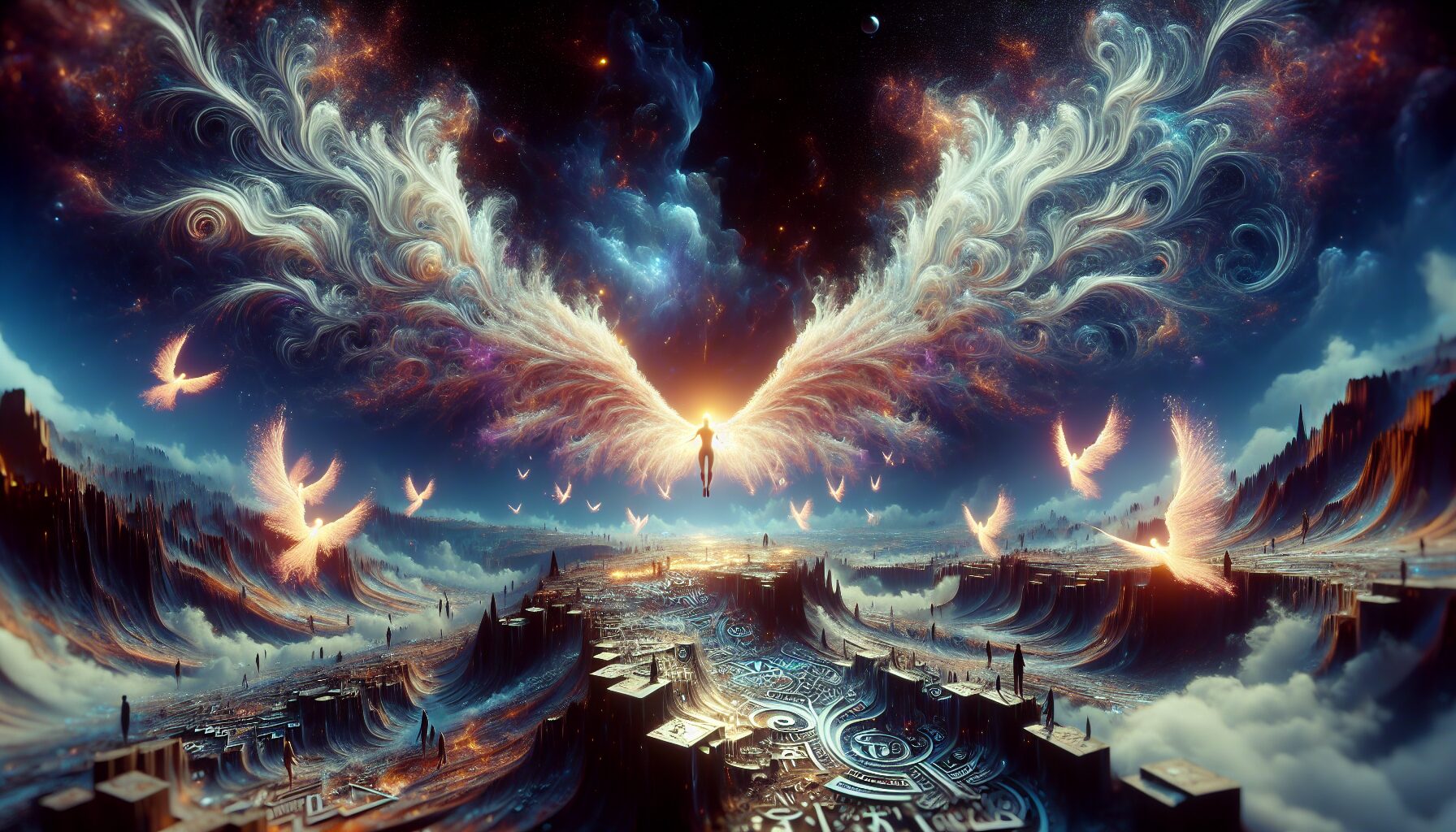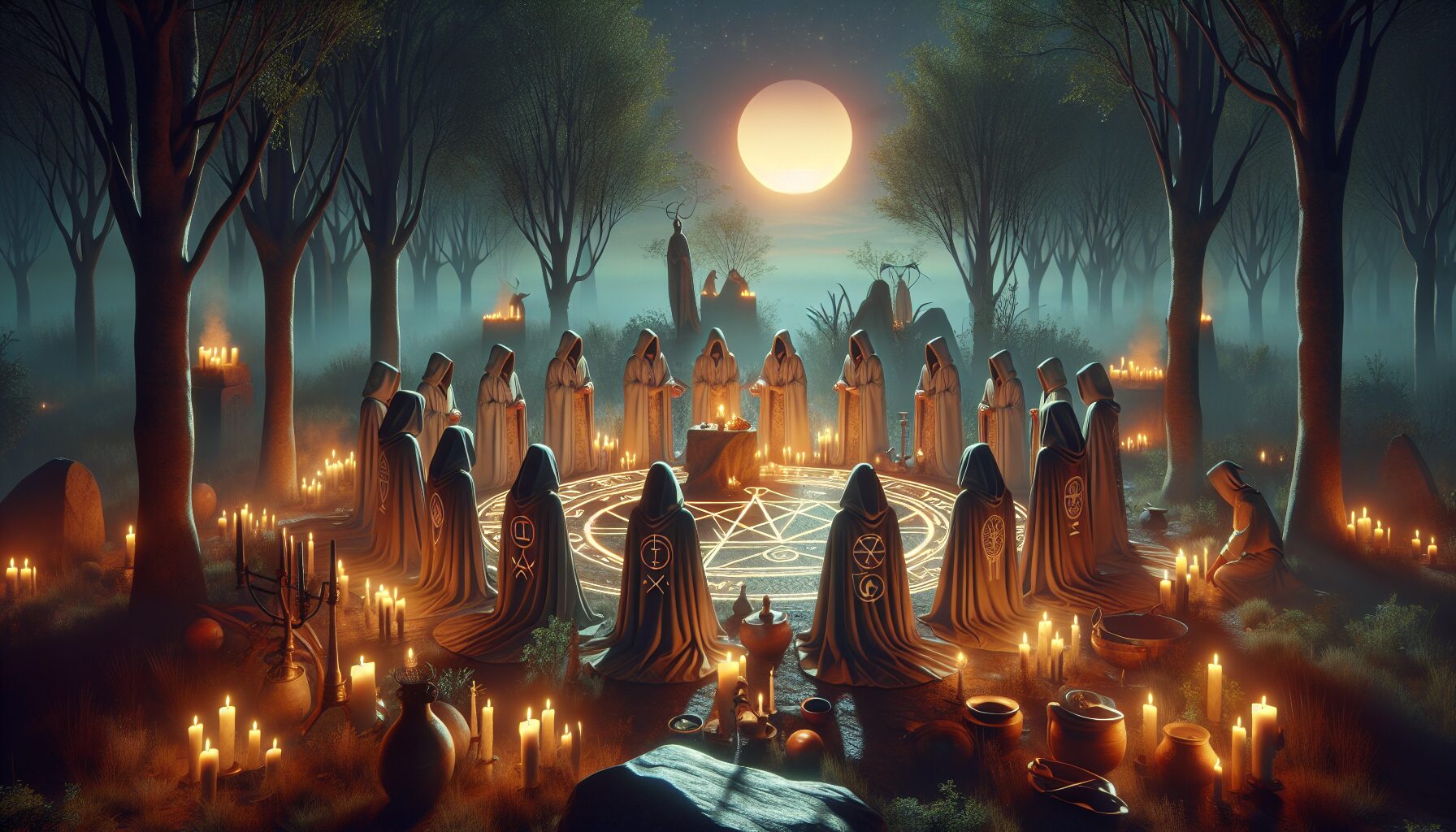Introduction: The Rise of Mythcore
In an age dominated by technology and unrelenting modernization, there grows a movement driven by a yearning for the metaphysical and mystical—the ‘Mythcore’. This contemporary aesthetic seamlessly blends ancient myths with modern sensibilities, creating a powerful resonance for today’s spiritual seekers. At the heart of this abstract and enigmatic movement lies the archetype of the “Angels of Ash”. These ethereal figures encapsulate the essence of rebirth, destruction, and renewal, forming an imaginative bridge between past myths and the present journey for meaning.
Origins of Mythcore
Mythcore, much like its literary sibling mythopoeia, draws heavily from various mythologies, folklore, and mystical traditions, reimagining them through a modern lens. This aesthetic movement bears the intricate aesthetics of timeless fables and mythology, transformed by contemporary challenges and existential questions.
“Mythcore is about looking both ways—back into our cultural roots, while simultaneously looking forward into what we might become,” says Dr. Elisabeth Harlow, a noted expert on digital aesthetics and culture.
[Source]
Who Are the Angels of Ash?
At the intersection of this movement stands the symbolic figure of the Angels of Ash. These mystical entities are often depicted rising from the ruins, covered in the soot of their past identities. They are seen as both destroyers and creators, embodying the cycle of death and rebirth. This duality makes them potent symbols for those navigating the chaotic shifts in modern life.
- Emissaries of Transformation: The Angels of Ash are harbingers of change. They signify the conflation of endings and beginnings, reminding us that destruction often paves the way for new creation.
- Guardians of Hidden Truths: Much like mythical guardians, these angels protect forgotten knowledge—the ‘ashes’ of history that hold the seeds of wisdom for the future.
Iconography and Symbolism
The Angels of Ash are often depicted as having wings that are a blend of feathers and cinders, representing purity intertwined with remnants of destruction. Their eyes are usually depicted as deep and luminous, symbolizing profound insights gleaned from shrouded pasts.
- Ash: Represents both the residue of past failures and the soil for new growth—an eternal cycle.
- Wings: Flight and freedom juxtaposed with the burden of history, suggesting a balance between strength and vulnerability.
- Halo of Flames: Encircles their heads like a crown of enlightenment, illuminating paths yet to be taken.
Mythcore’s Cultural Influence
The aesthetic and thematic underpinnings of Mythcore, enhanced by symbols like the Angels of Ash, have infiltrated various cultural spheres—from fashion and art to literature and digital media.
Fashion: Designers are embracing the Mythcore palette, incorporating burnt oranges, deep greys, and ethereal helix patterns reminiscent of ancient texts. Some have even crafted garments imbued with the intricate designs found in ancient lore, blended with futuristic cuts and materials.
Literature: Stories inspired by Mythcore themes are appearing with increasing frequency, where protagonists are often engaged in quests that parallel the archetypal journey of the Angels of Ash—protagonists heralding a requiem for forgotten relics and unsurpassed evolutions.
The Philosophical Underpinning
At its core, the Angels of Ash embody a powerful philosophical inquiry into the human condition and our existential path. They challenge us to embrace our shadows and recall that from even the most profound despair, emerges a possibility of light and renewal.
As Joseph Campbell posits, “The cave you fear to enter holds the treasure you seek.” The Angels of Ash call upon modern seekers to traverse their inner darkness, to uncover the treasures hidden beneath layers of soot and forgotten myths.
[Campbell Foundation]
Conclusion: Modern Seekers and Their Journey
In the landscape of today’s quest for meaning, the Angels of Ash provide a remarkably fitting mythcore symbol. They encapsulate the convergence of destruction and renaissance, serving as a guiding beacon for those seeking to reconcile their past with the present, and ultimately forge inventive pathways to the future. Whether through art, philosophy, or personal journey, these mythic figures inspire us to rise from our own ashes, embracing a new dawn woven from the threads of forgotten legends and contemporary aspirations.


